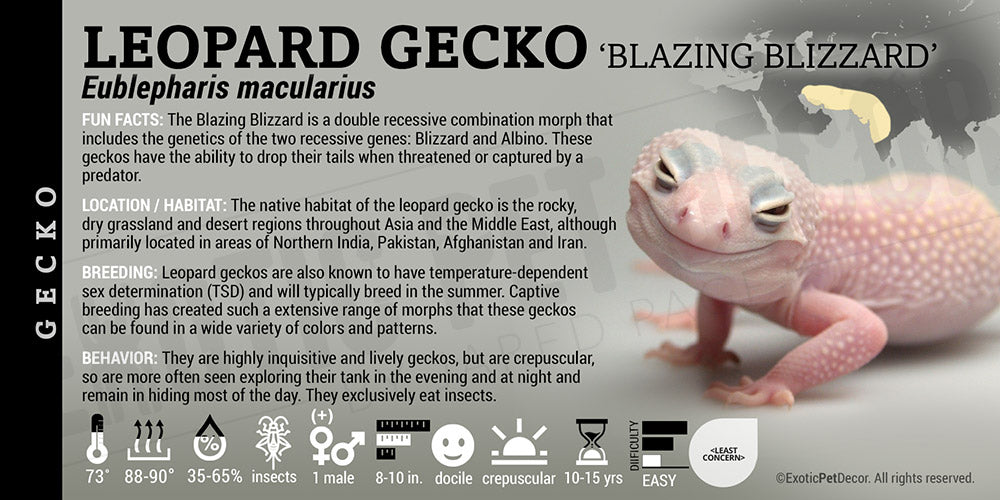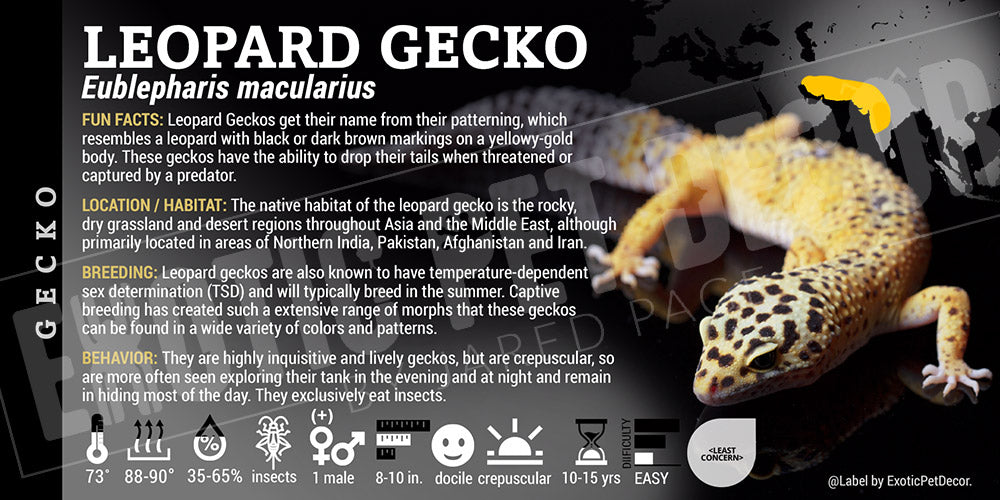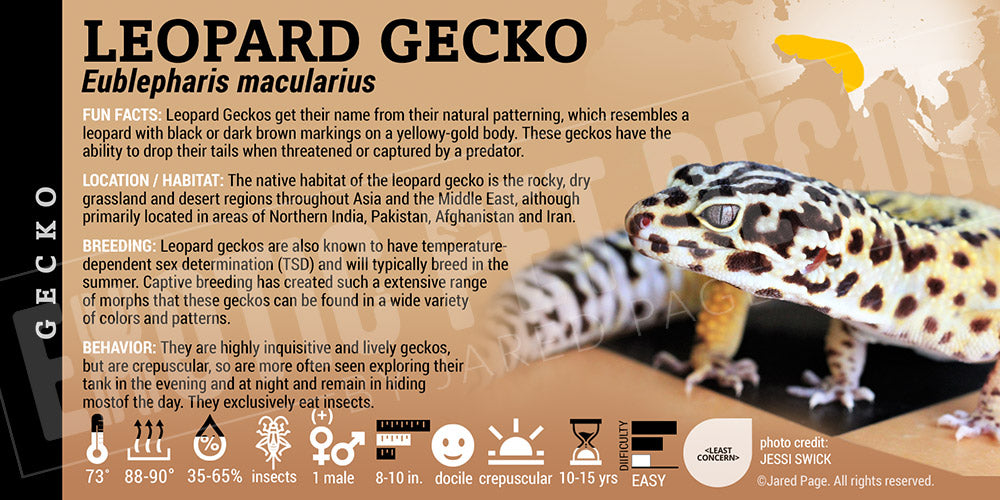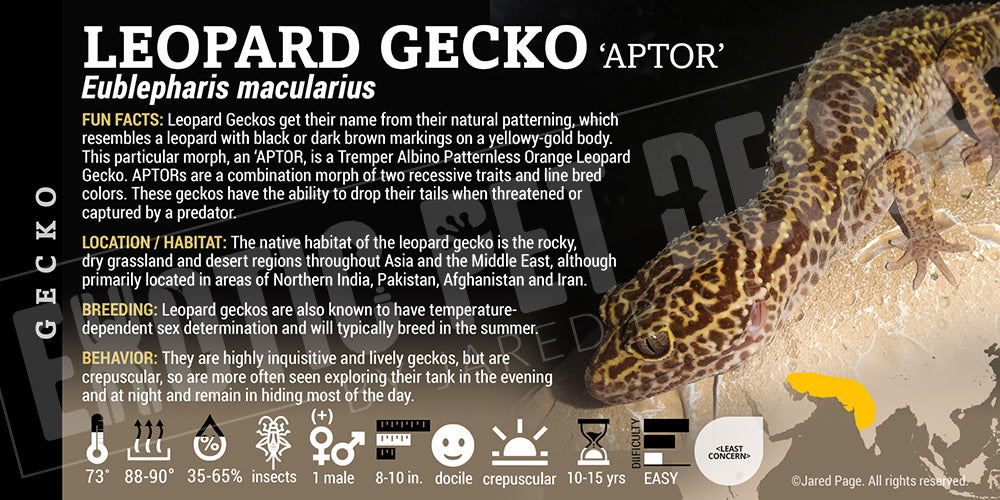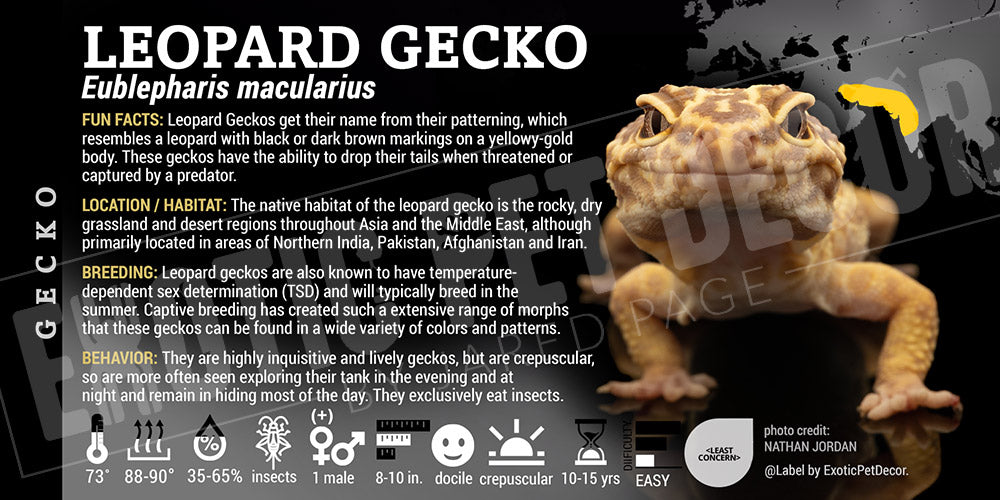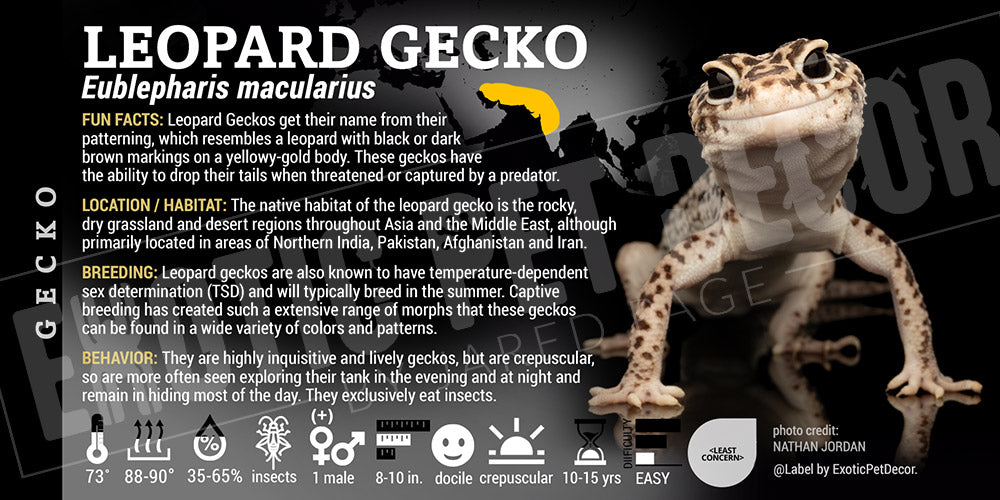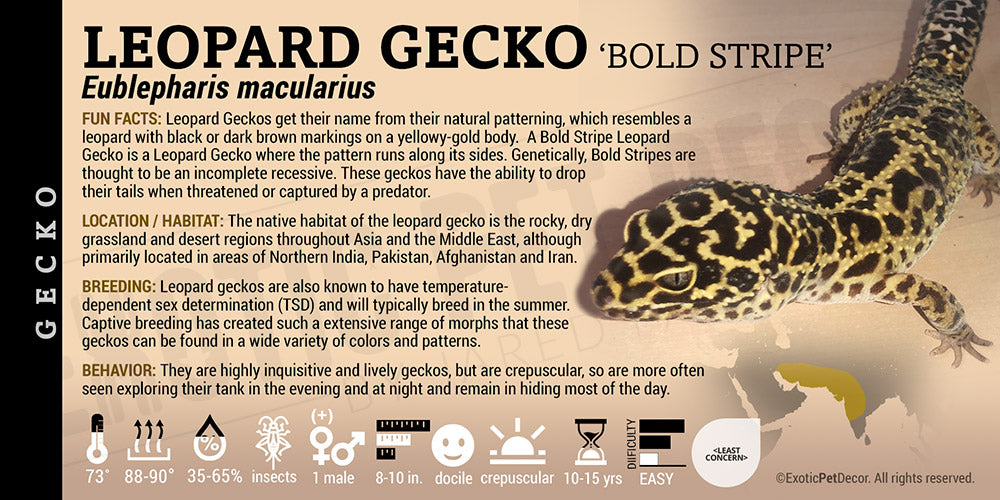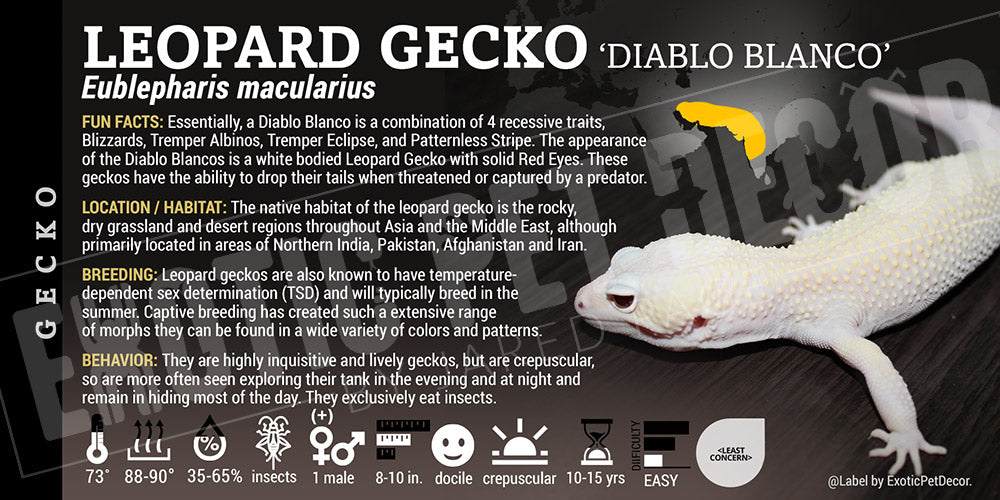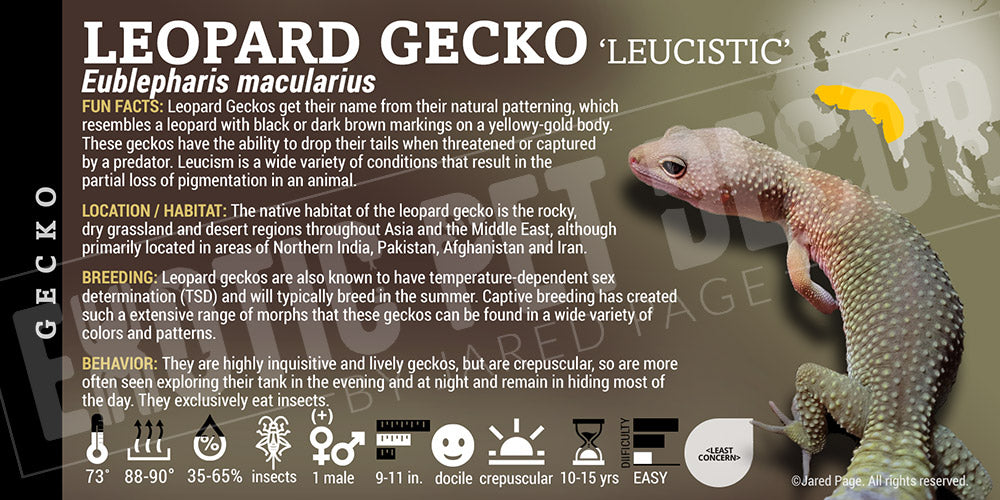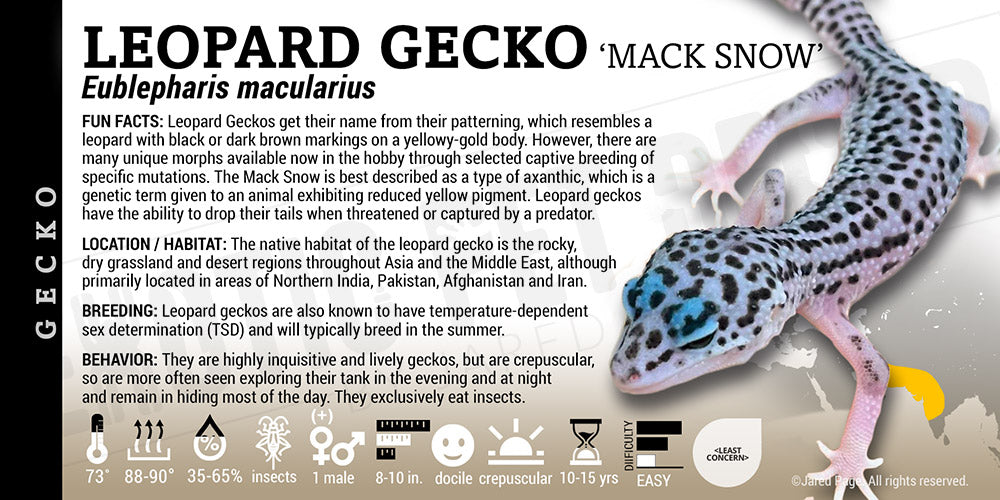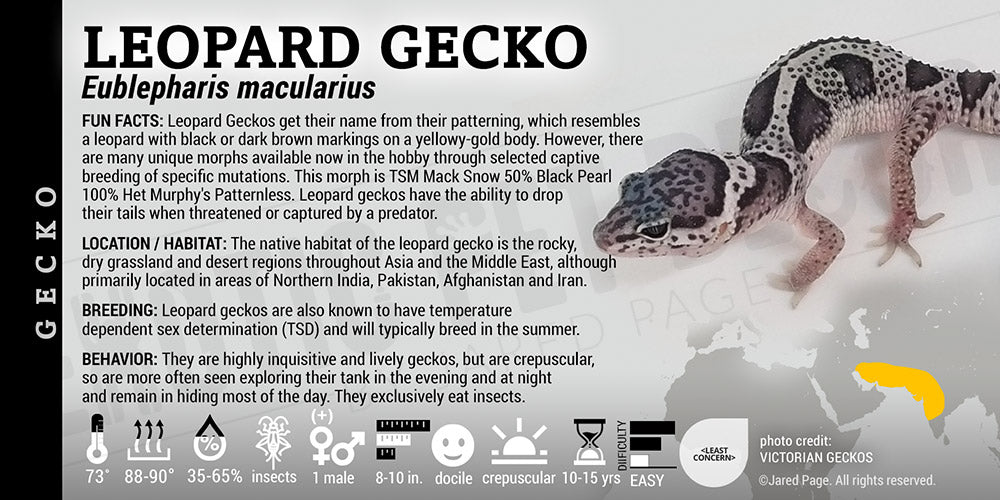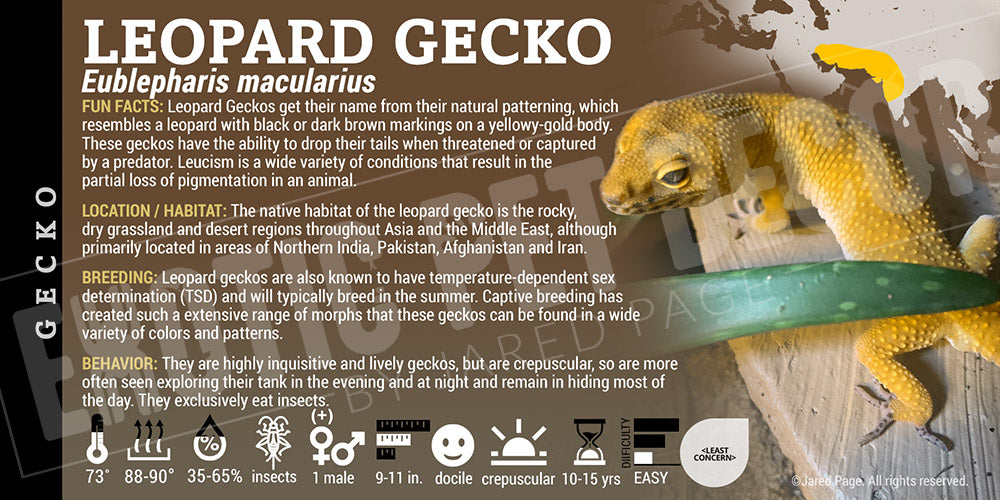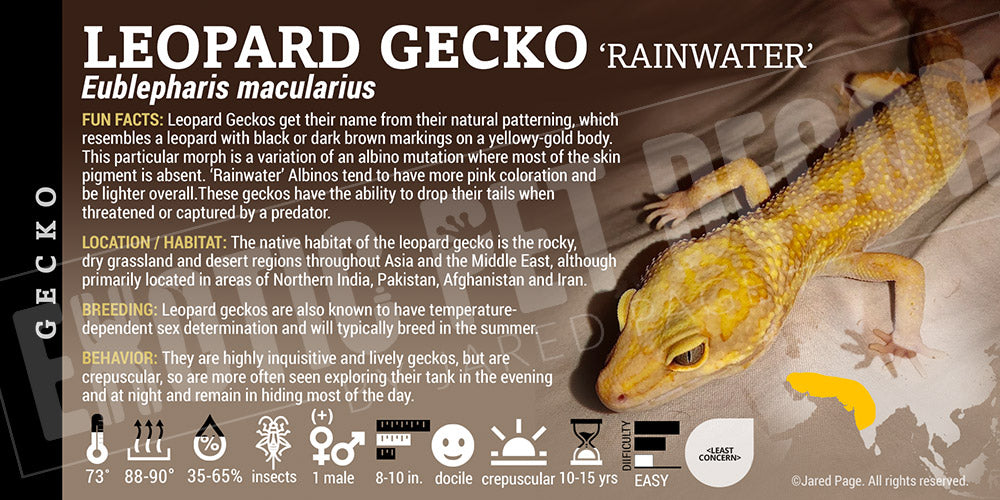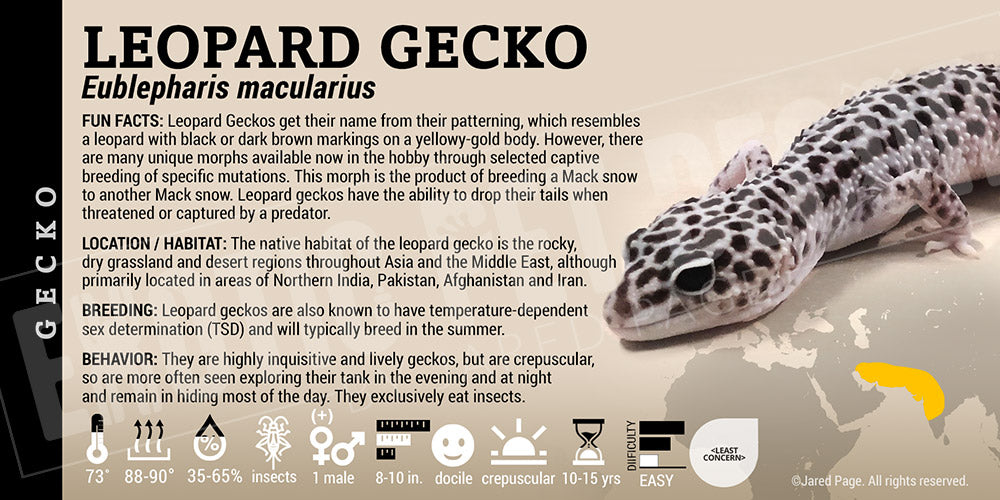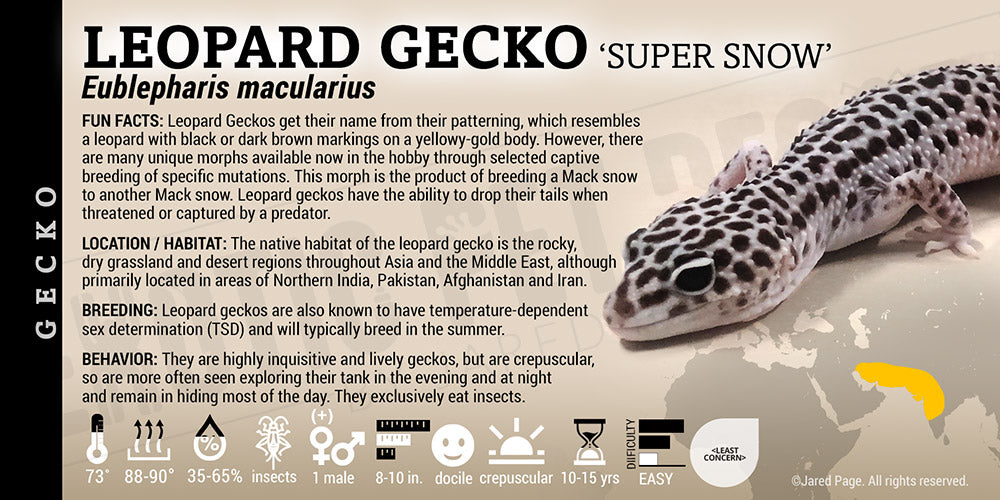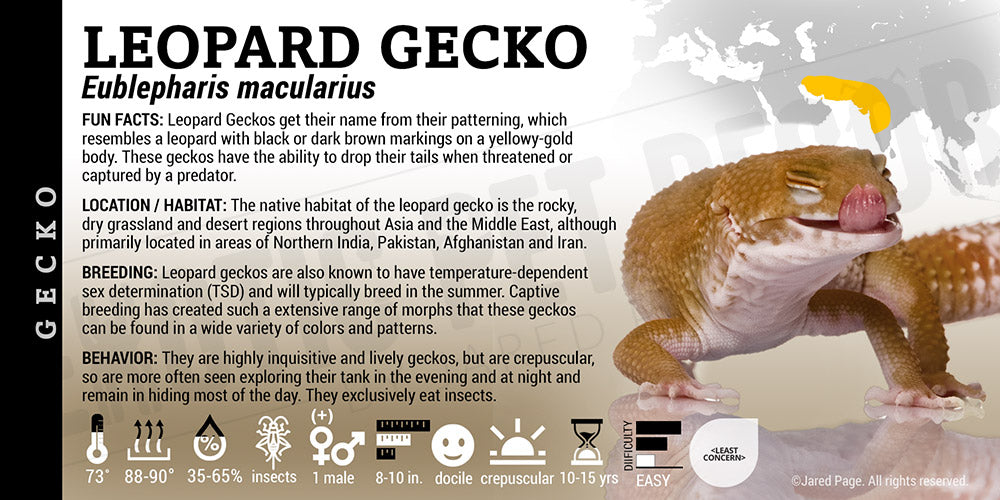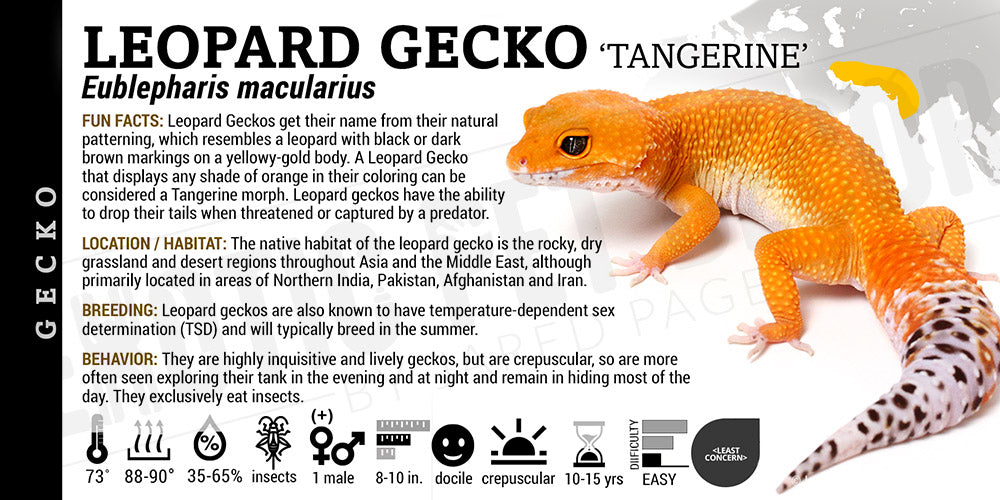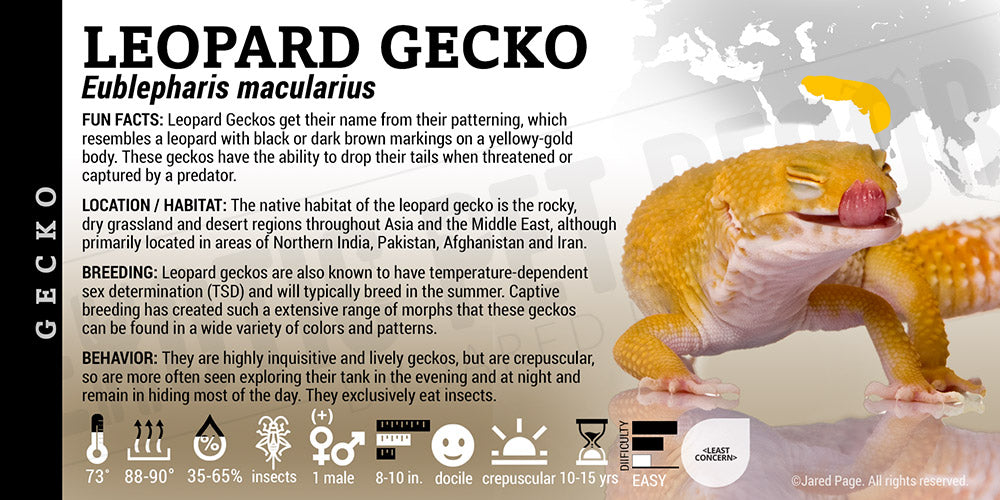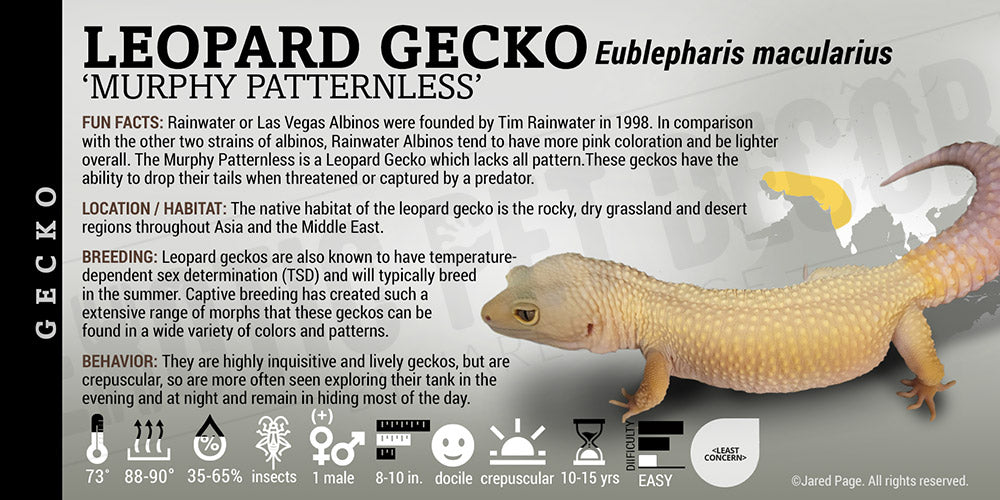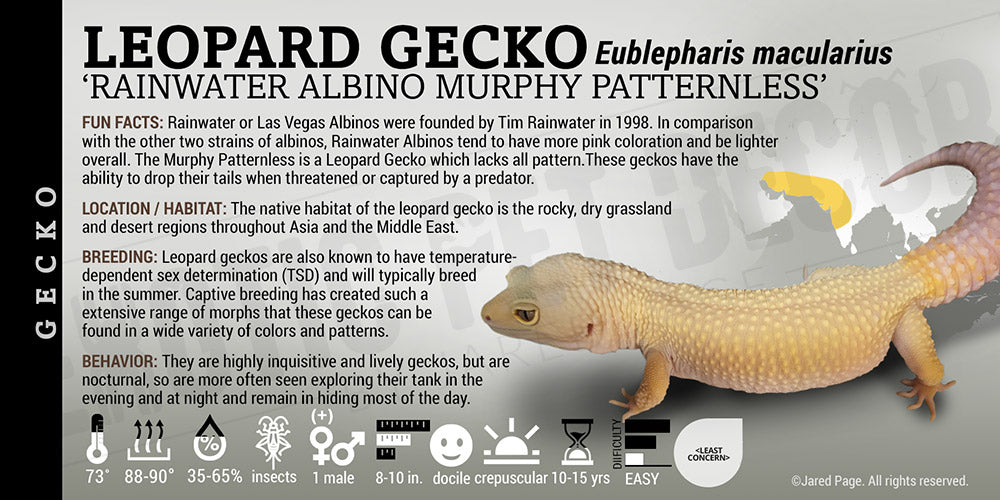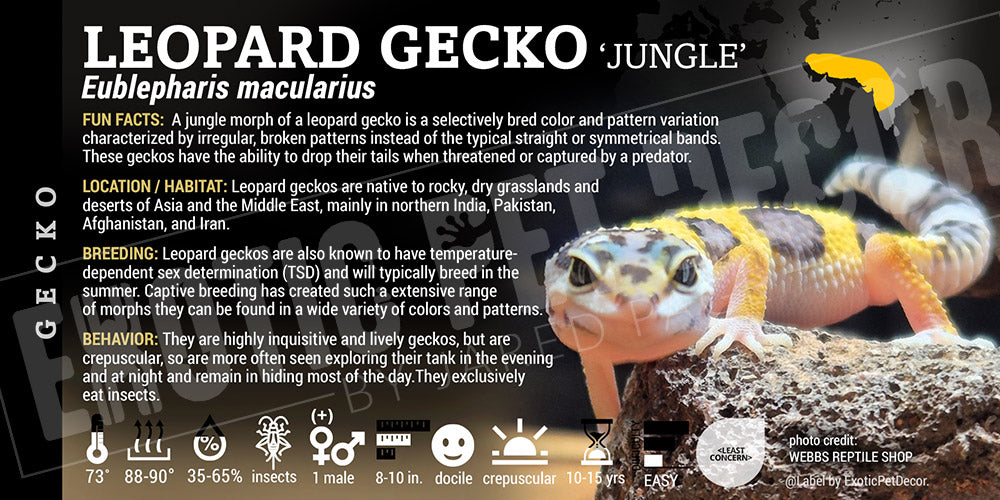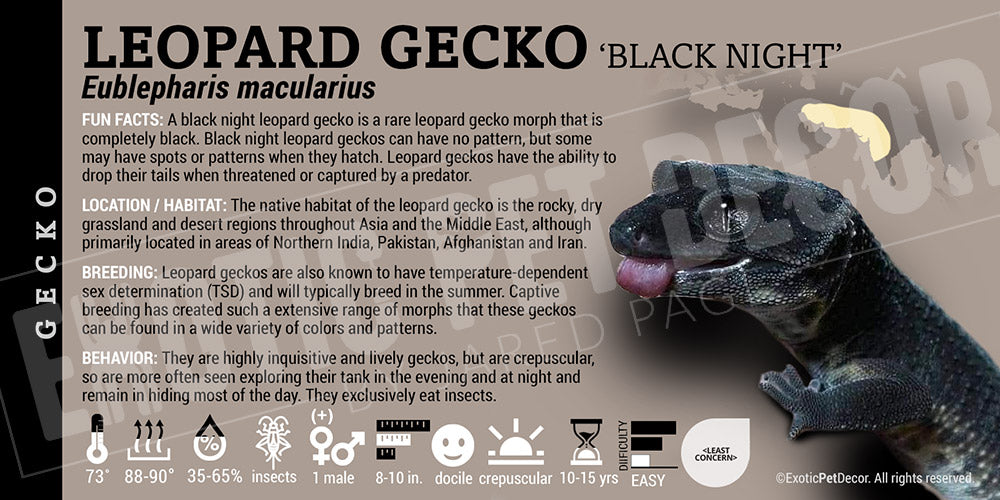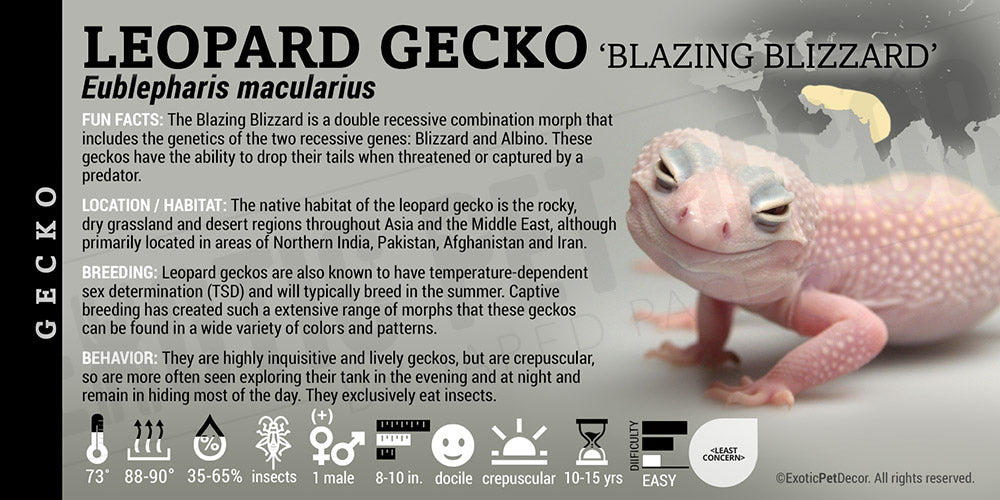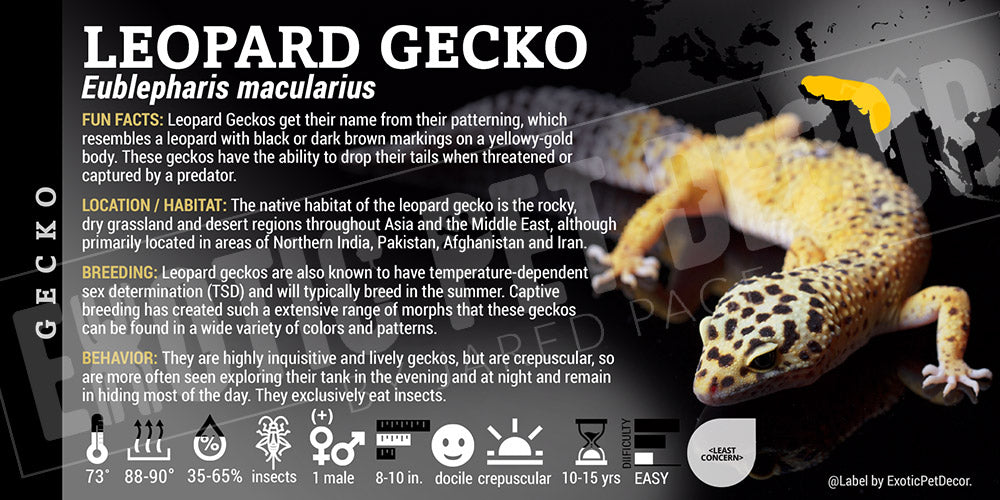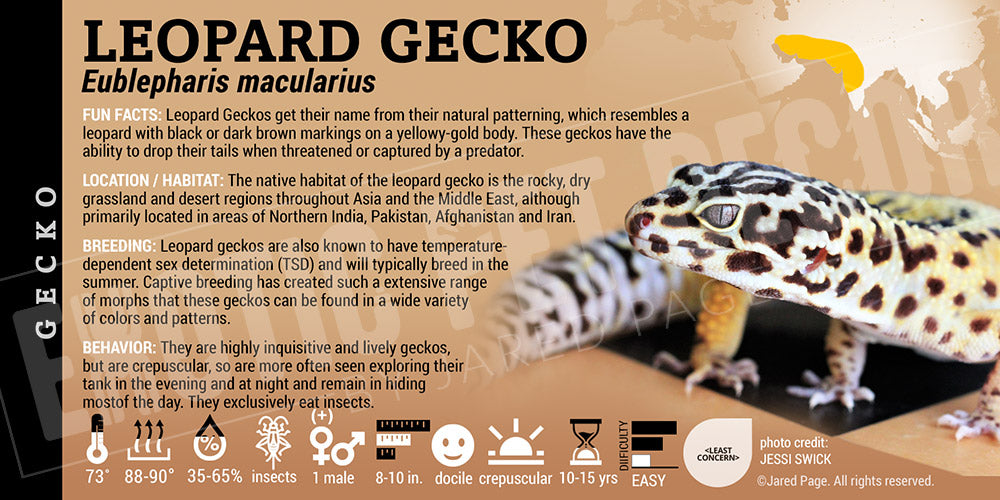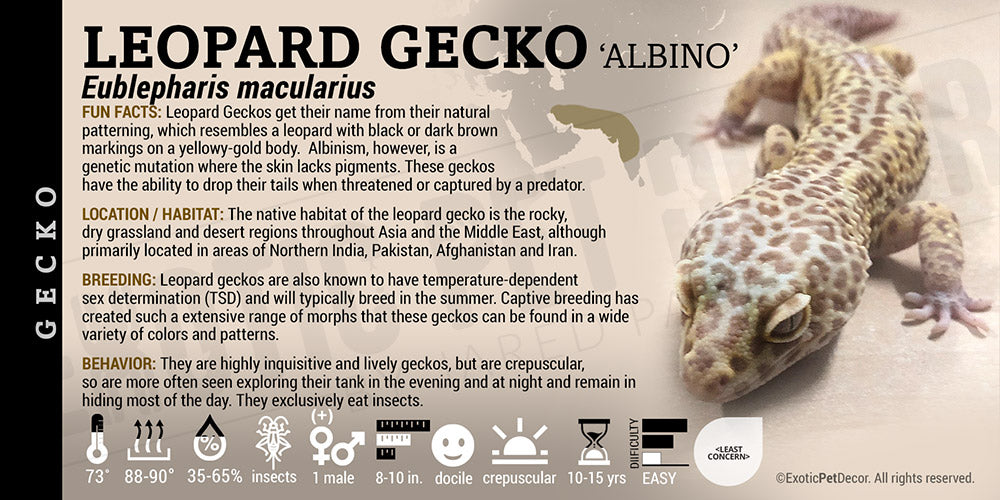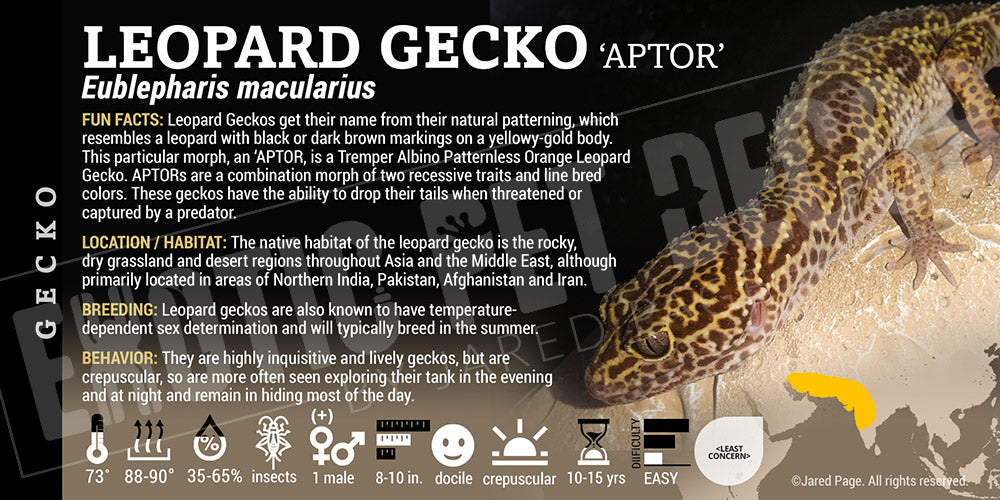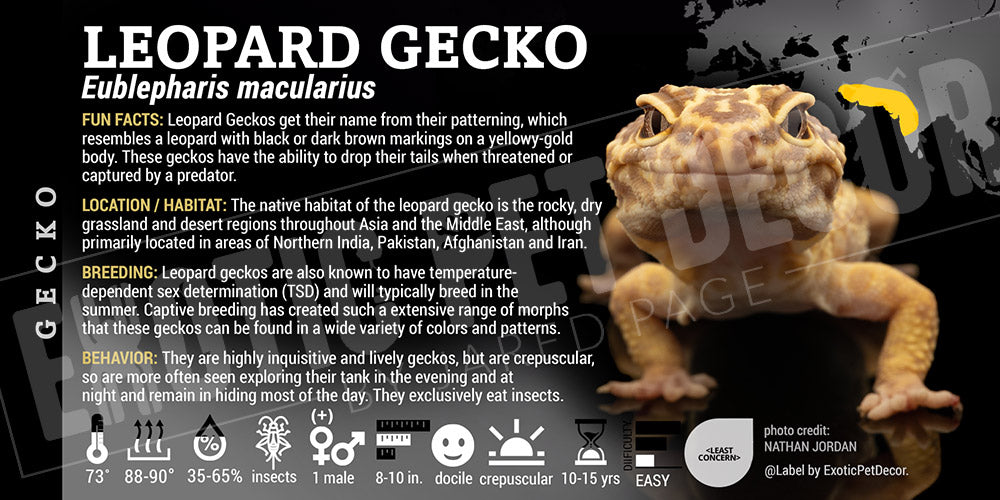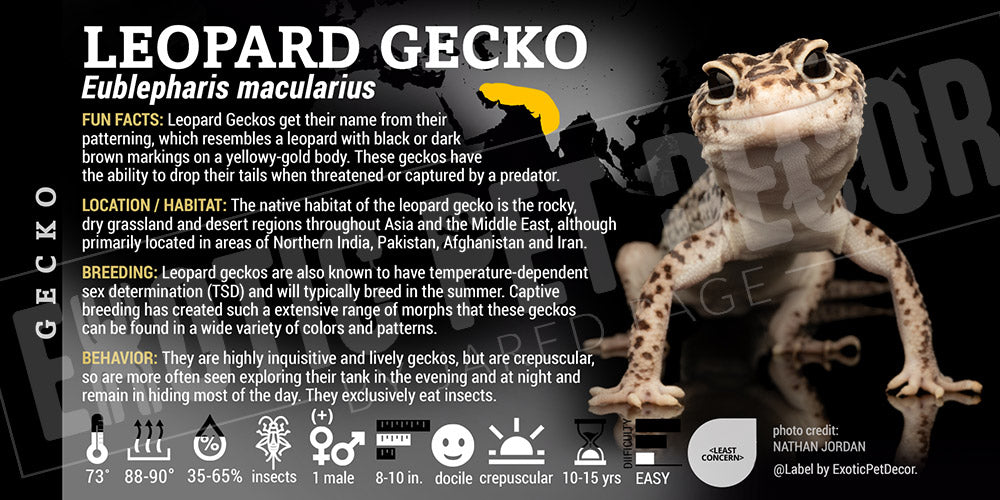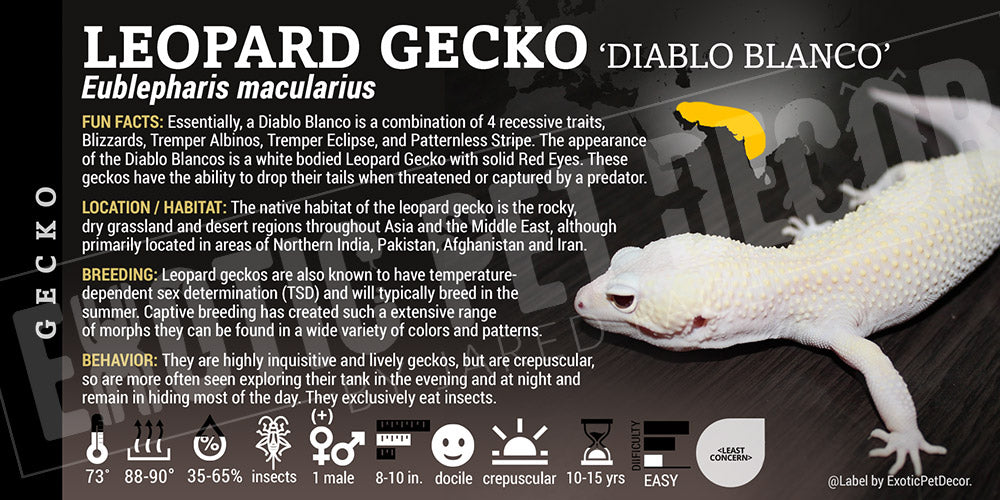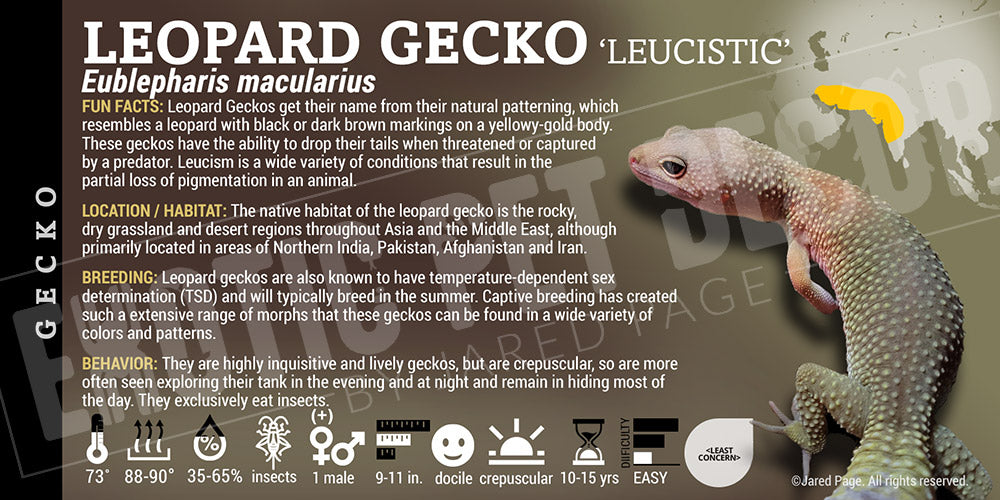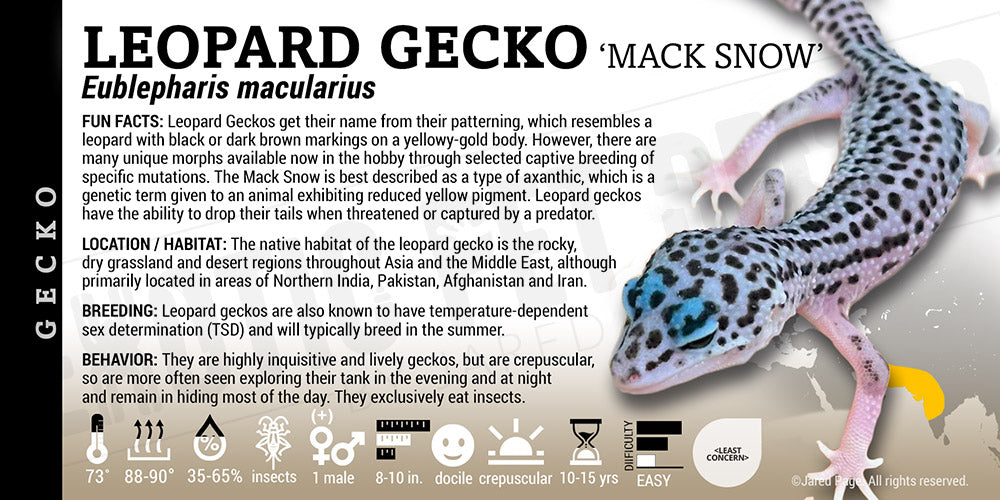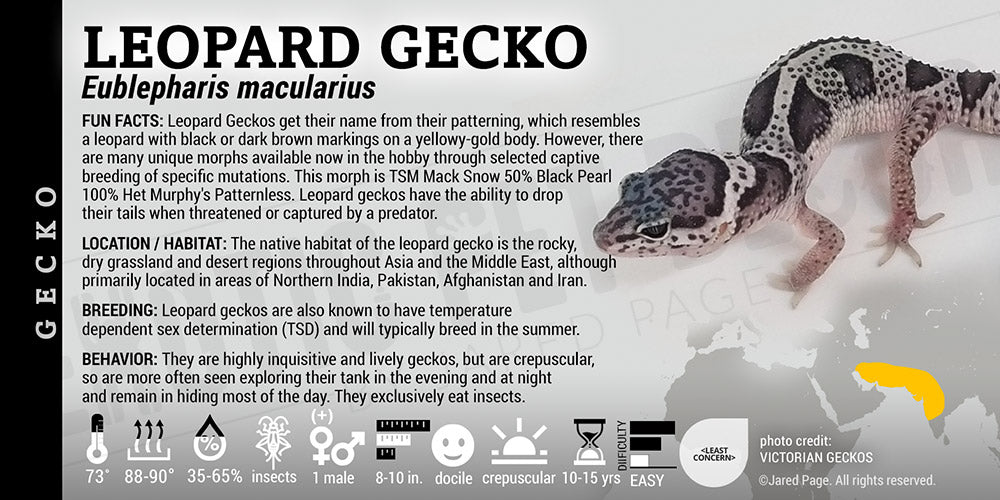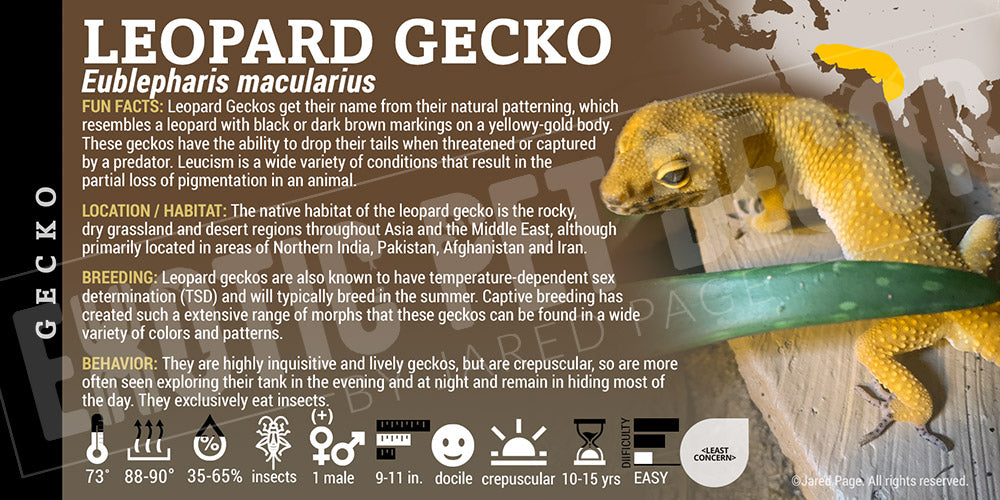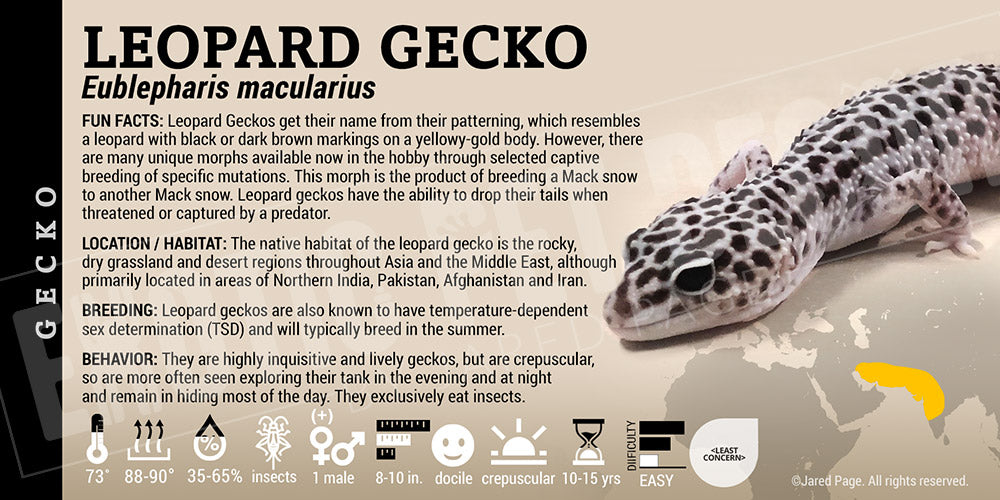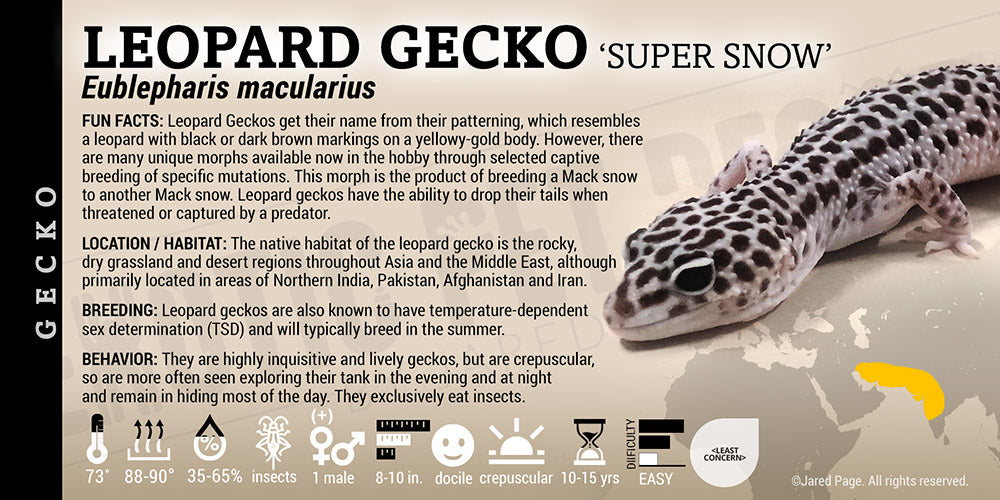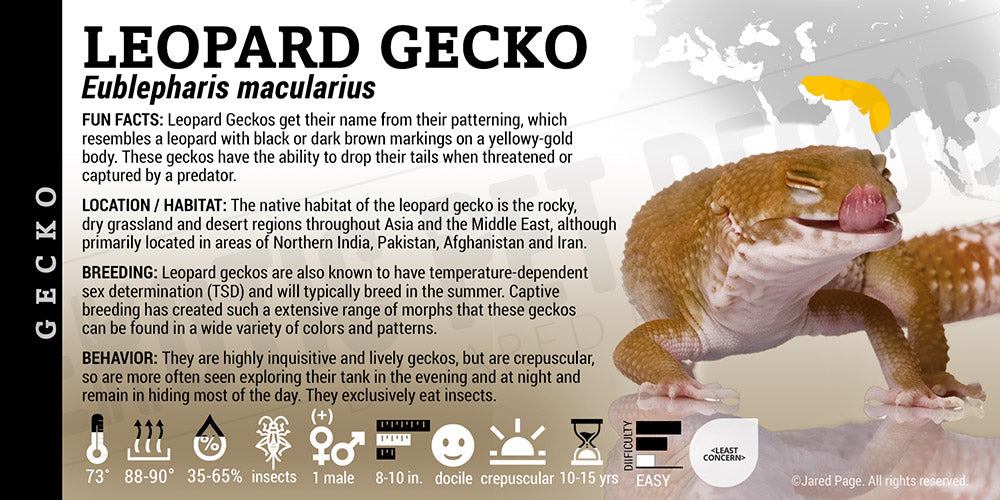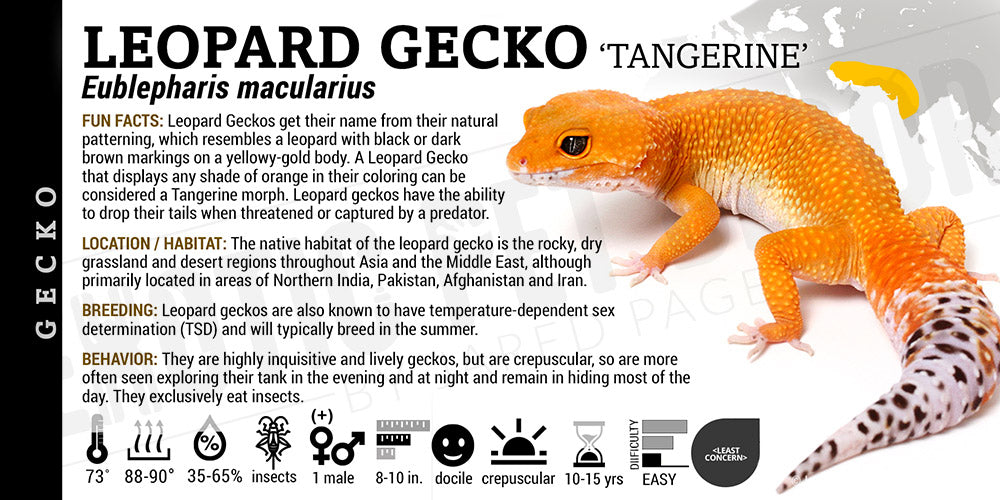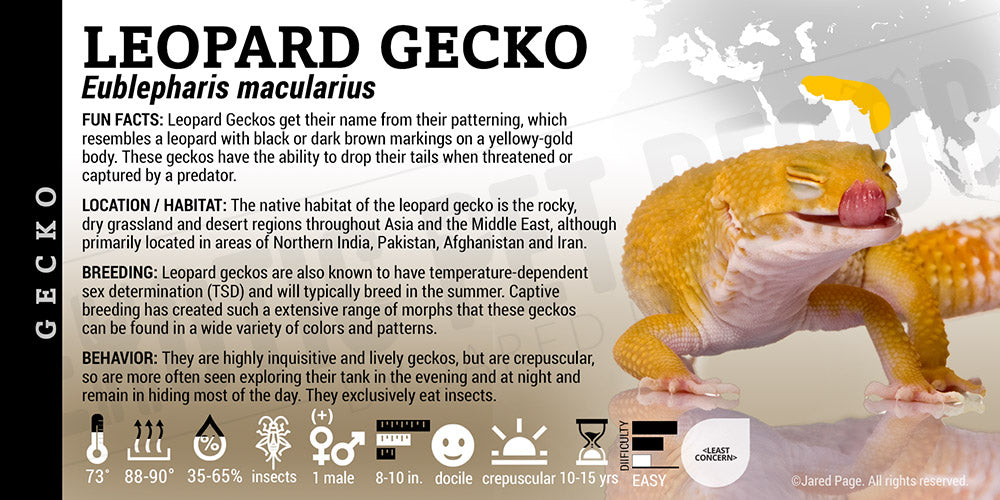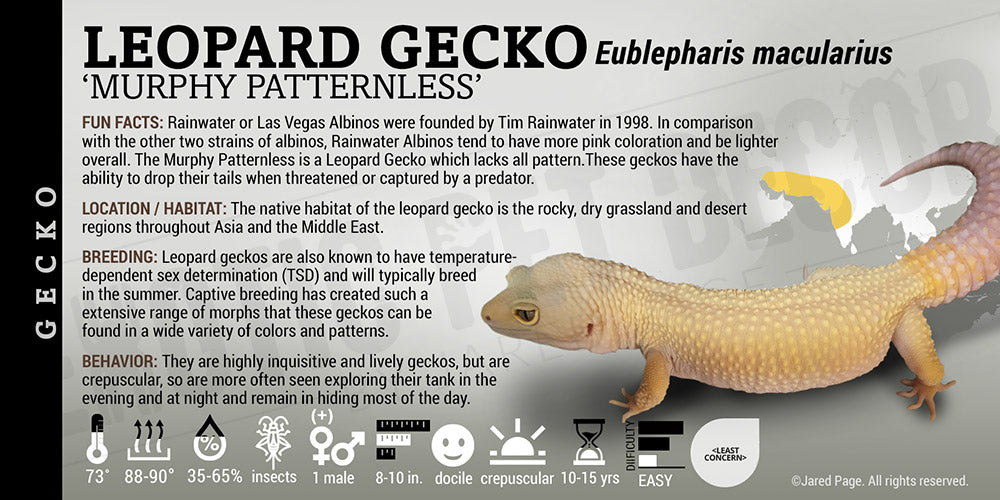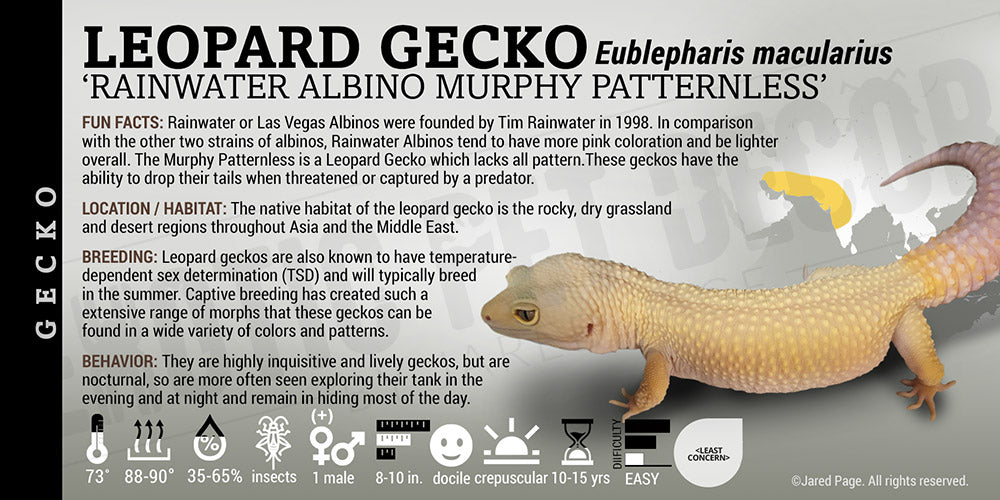Eublepharis macularius 'Leopard' Gecko
Eublepharis macularius 'Leopard' Gecko
Couldn't load pickup availability
Share This Page
- 5 mil Hard Laminated Moisture Proof Plastic
- 3"x6" for vertebrates and 2.5"x6" for inverts
- Next day processing and USPS First Class Shipping
For reptile terrarium, viviarium, or paludarium enclosure labels, trade show & Expo signage, retail signage, collector cards, educational facilities, wall art, and more.
These cards contain fun facts about the species including location, natural endemic map, breeding information, care info, IUCN status and more.
Standard size measures 3 inches tall and 6 inches wide. Printed on high-quality photo paper and laminated with 5mm hard plastic to protect it from moisture and damage.
Adding pet names, personal photos, store branding, and other customizations is possible but pricing varies. Contact me for a quote.
Eublepharis macularius 'Leopard' Gecko Facts:
Common Names: Leopard gecko
FUN FACTS: Leopard Geckos derive their name from their patterning, resembling a leopard with black or dark brown markings on a yellowy-gold body. These geckos possess the ability to shed their tails when threatened or captured by a predator.
LOCATION / HABITAT: Leopard geckos inhabit rocky, dry grassland, and desert regions across Asia and the Middle East, primarily in areas of Northern India, Pakistan, Afghanistan, and Iran.
BREEDING: Leopard geckos exhibit temperature-dependent sex determination (TSD) and typically breed during the summer months. Through captive breeding, a vast array of morphs has been developed, resulting in a wide variety of colors and patterns among these geckos.
BEHAVIOR: Highly inquisitive and lively, leopard geckos are crepuscular, preferring to explore their tank in the evening and at night while remaining in hiding during the day. They exclusively consume insects.
Frequently Asked Questions
Frequently Asked Questions
- What does the physical card look like?
- How do I attach the cards?
- How do you ship and when can I expect it?
- Can I add my pet names?
- Can I customize them?
For answers to these and other questions, visit the FAQ page.


